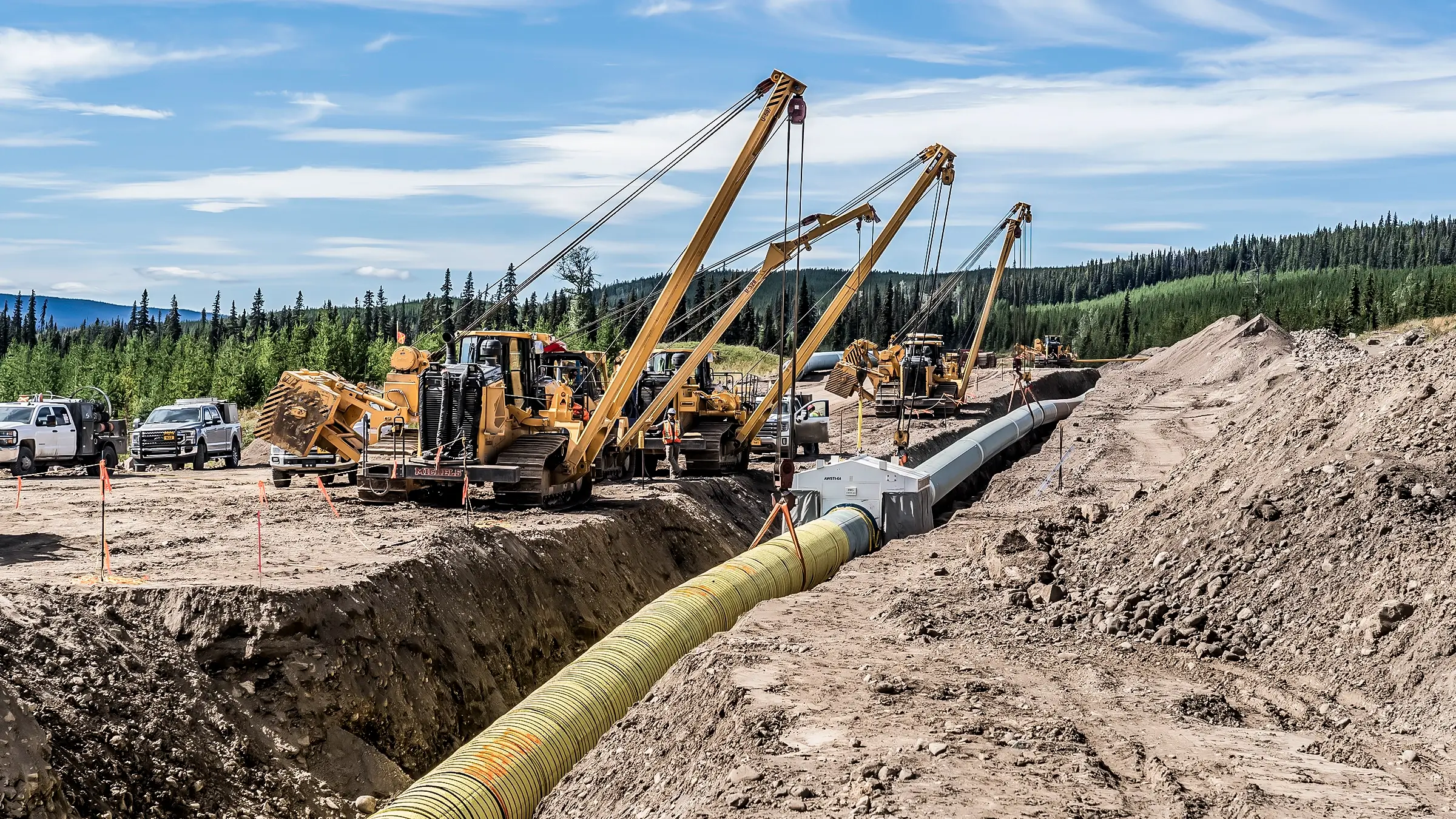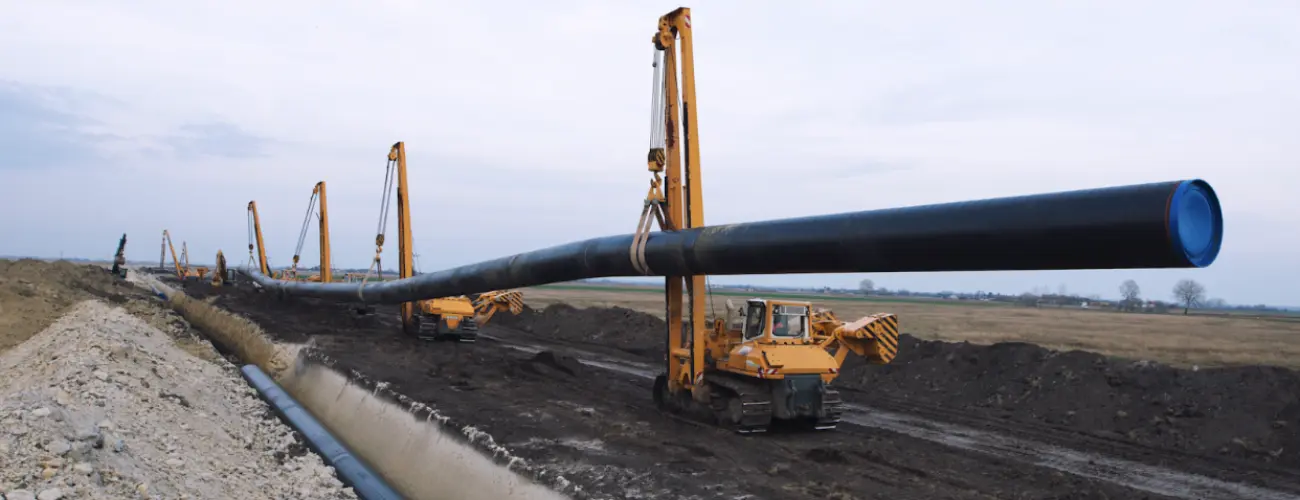A Deep Study Pipes Installation: Important Aspects and Factors To Consider for Effective Projects
Reliable pipe installation is a critical facet of design projects. It includes a range of aspects, from material option to precise sizing and layout. Each choice can notably impact the system's performance and durability. Comprehending these components is crucial for staying clear of expensive blunders. Creek Pipe Texas oilfield. As teams navigate via the intricacies of installation, several key considerations arise that warrant focus. What are the critical components that can make or damage a piping project?
Recognizing Pipe Products and Their Applications
When choosing pipe products, one have to take into consideration the specific applications and ecological problems they will face. Different materials offer unique residential properties that cater to different demands. For example, PVC is lightweight and immune to rust, making it suitable for water circulation systems. Alternatively, steel pipes provide stamina and sturdiness, suitable for high-pressure applications however might require protective coverings to avoid rust.Copper pipes are favored for pipes as a result of their antimicrobial residential properties and simplicity of installation, while polyethylene is usually utilized in underground applications due to its adaptability and resistance to cracking.The option of material likewise pivots on temperature level extremes, chemical direct exposure, and installation location. For high-temperature applications, products like CPVC or PEX can be helpful. Inevitably, comprehending the attributes and constraints of each material help in making notified choices that boost system performance and durability.
Relevance of Appropriate Sizing and Design
Correct sizing and style of pipes are critical for ensuring suitable circulation prices and minimizing pressure loss. These aspects likewise play a substantial function in establishing the compatibility of products used in the installation. A systematic method to sizing and layout can substantially improve the performance and longevity of a piping system.
Influence On Circulation Rates
Flow prices in piping systems are critically affected by the sizing and style of the pipelines. Appropriately sized pipes ensure that the fluid can move successfully, minimizing disturbance and taking full advantage of flow capability. Oversized pipes can cause lowered flow speeds, while small pipes may limit circulation, causing raised rubbing and potential obstructions. The design needs to likewise think about aspects such as pipe product, interior surface area level of smoothness, and format, as these add to the total performance of liquid transportation. Furthermore, the plan of installations and links within the system can impact flow prices. As a result, careful attention to pipe sizing and design is important for enhancing flow performance in any piping installation task.
Stress Loss Considerations

How can press loss considerably impact the effectiveness of a piping system? Stress loss is an important element that can substantially diminish the performance of fluid transport systems. When pipelines are improperly sized or made, extreme stress loss might occur, causing lowered flow rates and increased energy intake. This ineffectiveness can result in greater functional costs and possible system failures. Appropriate sizing and layout are necessary to reduce pressure loss, making certain that fluid dynamics stay perfect throughout the system. Engineers should thoroughly consider factors such as pipe diameter, length, and material to attain an effective equilibrium. Ultimately, addressing stress loss during the style stage can boost dependability and longevity, making it essential for effective piping tasks.
Product Compatibility Aspects
Pressure loss is not the only element that can impact the efficiency of a piping system; product compatibility also plays a considerable function in overall performance. Making certain that the products utilized in a piping system are suitable with the liquids they will deliver is crucial. Various products can respond detrimentally to different chemicals, bring about rust, deterioration, or contamination. This can ultimately compromise the honesty of the system and affect its longevity. Furthermore, appropriate sizing and style are important to fit thermal development and contraction, which can further influence material performance. Examining elements such as temperature, stress, and chemical structure is critical in picking ideal products, thus enhancing system reliability and minimizing maintenance prices in the long term.
Strategies for Accurate Pipe Installation
Exact pipe installation is essential for ensuring system efficiency and long life. Numerous strategies can boost the accuracy of this process. Careful measurement is crucial; installers need to utilize quality tools such as laser degrees and tape procedures to determine the exact lengths and angles required. Next off, correct pipe reducing methods, like using a pipe cutter rather than a hacksaw, warranty tidy sides that help with far better website link links. Additionally, the use of placement tools, such as pipe jigs, can significantly enhance precision throughout setting up. It is likewise suggested to take into consideration thermal development; enabling appropriate spacing and development joints can stop future imbalances. The installation group need to comply with maker guidelines to adhere to specific recommendations associated to each pipe type. By implementing these strategies, the chance of leakages and system failings reduces, inevitably adding to an extra reputable piping system.
Making Sure Pipe Positioning and Support
Appropriate placement and assistance are critical to the stability and efficiency of any piping system. Misalignment can cause boosted tension on joints, prospective leakages, and minimized performance. To assure appropriate placement, it is important to utilize appropriate tools such as laser degrees and alignment gauges. These instruments help attain specific positioning, ensuring that pipelines are mounted based on design specifications.Support systems have to be developed to suit thermal expansion and contraction, as well as the weight of the pipelines and their components. Selecting the best sort of assistances, hangers, and brackets is imperative. Each must be installed at defined intervals to protect against sagging or excessive tension on the pipelines. Routine inspections adhering to installation can aid identify any kind of imbalances or signs of insufficient support. By focusing on placement and support, one can significantly boost the toughness and functionality of the piping system.
Usual Installation Mistakes to Avoid

Examining and Evaluation for Quality Control
Although the installation process might show up complete, detailed testing and assessment are critical to making sure the long-lasting integrity of a piping system. Various techniques are employed to assess the integrity of the installation, including pressure tests, aesthetic assessments, and non-destructive screening (NDT) techniques. Stress tests verify that the system can endure operational problems without leaks, while visual inspections help recognize any kind of visible problems in the pipelines or joints. NDT methods, such as ultrasonic or radiographic testing, provide insights into the material integrity without compromising the system.Additionally, documenting the testing results is essential for future recommendation and compliance with industry requirements. This documents serves not only as a quality control action yet also as a legal guard. Inevitably, an extensive testing and evaluation protocol contributes to the general security and effectiveness of the piping system, guaranteeing it meets the necessary efficiency criteria with time.
Maintenance Tips for Resilient Pipe Equipments
Keeping a pipeline system needs routine inspections and monitoring to recognize prospective concerns before they rise. Applying efficient cleaning techniques is also vital for stopping accumulation that can impede performance. With each other, these practices add to the long life and integrity of the piping facilities.
Routine Evaluations and Tracking
Normal examinations and surveillance are vital for ensuring the longevity and performance of pipe systems. Normal evaluations can help identify possible problems such as leakages, corrosion, or clogs before they escalate into substantial problems. Executing a schedule for regular assessments permits for the early discovery of deterioration, allowing prompt fixings. Monitoring stress degrees and flow prices can likewise offer important understandings right into system performance, ensuring that any abnormalities are resolved without delay. Furthermore, making use of innovative modern technologies, such as infrared navigate to this site video cameras or ultrasonic testing, can enhance the assessment procedure by offering in-depth details concerning pipe problems. Ultimately, constant surveillance and inspections add to the reliability and resilience of pipe systems, decreasing the danger of pricey repair work and downtime.

Effective Cleansing Techniques
Effective cleaning strategies are vital for keeping the honesty and capability of pipe systems. On a regular basis arranged maintenance, such as flushing systems with water, helps eliminate debris and build-up. For more stubborn blockages, specialists typically advise hydro jetting, which uses high-pressure water to tidy pipe insides thoroughly. Chemical cleaners can likewise be made use of however should be picked very carefully to avoid destructive pipes. On top of that, using tools like pipe electronic cameras can aid in determining trouble areas and making sure reliable cleaning. Keeping appropriate drainage and staying clear of the disposal of harmful compounds down pipes even more add to durability. On the whole, regular cleansing practices not just improve performance yet likewise lower the danger of pricey fixings in the future.
Regularly Asked Concerns
What Are the Labor Prices Linked With Pipe Installation Projects?
Labor costs for pipe installation jobs differ widely, influenced by aspects like job intricacy, local wage rates, and required skills (Creek Pipe pipeline construction). Normally, these costs can vary from $50 to $100 per hour, relying on the workforce included
Exactly How Do Neighborhood Laws Affect Pipe Installation Practices?
Regional regulations substantially affect pipe installation practices by developing safety requirements, material specs, and installation approaches. Compliance with these policies warranties job security, environmental protection, and adherence to neighborhood codes, eventually affecting general task success and costs.
What Devices Are Necessary for Pipe Installation?
Crucial tools for pipe installation consist of monkey wrench, cutters, and installations. In addition, sealants, determining tapes, and degrees ensure precision and durability. Proper devices advertises efficiency and adherence to safety standards throughout the installation procedure.
Exactly How Can Weather Conditions Impact the Installation Refine?
Climate condition substantially affect the installation process, as severe temperatures, rainfall, or wind can impact material honesty, worker safety and security, and job timelines. Correct preparation and scheduling are essential to minimize these possible challenges throughout installation.
Are There Service Warranties for Set Up Pipe Solutions?
Service warranties for installed pipe systems often differ by maker and installation service provider. Generally, they cover issues and workmanship for a specified period, guaranteeing the system's reliability and offering satisfaction to the homeowner.